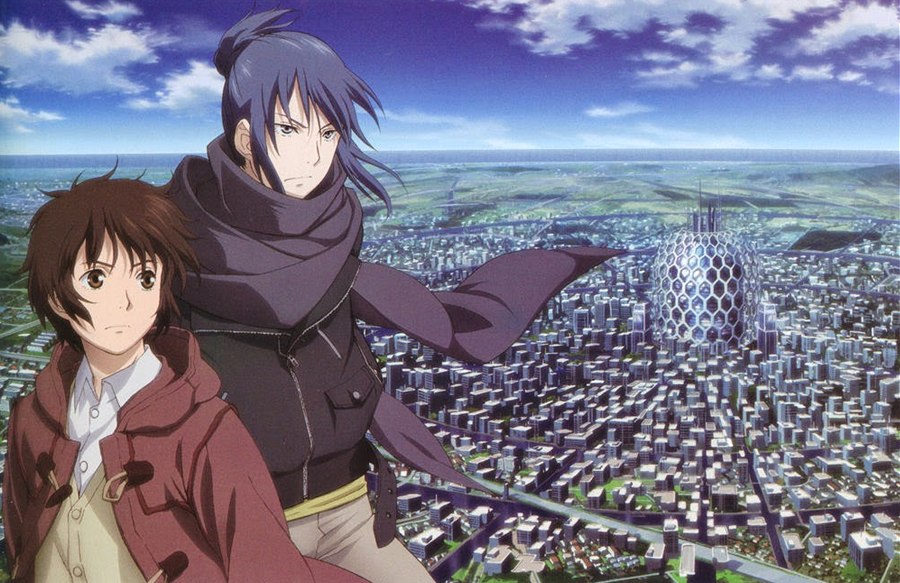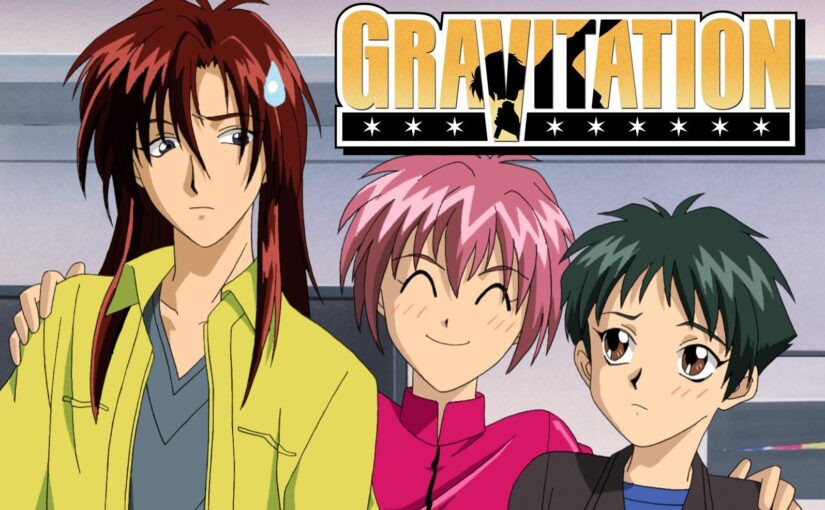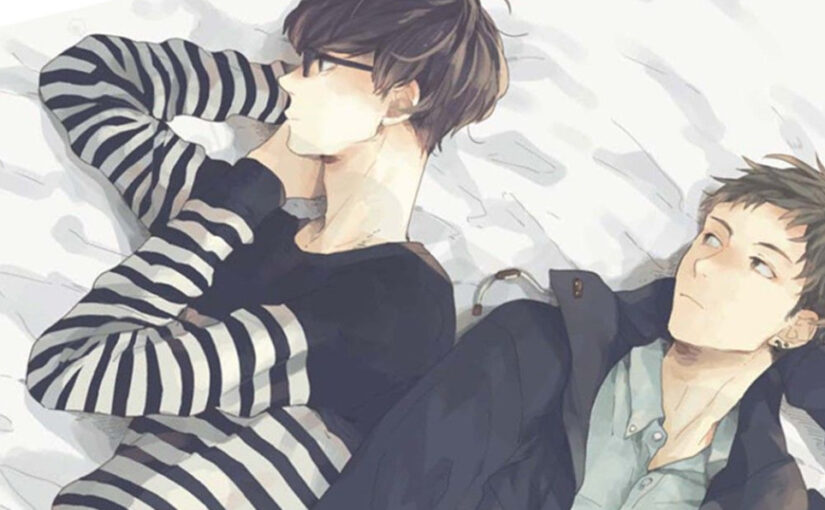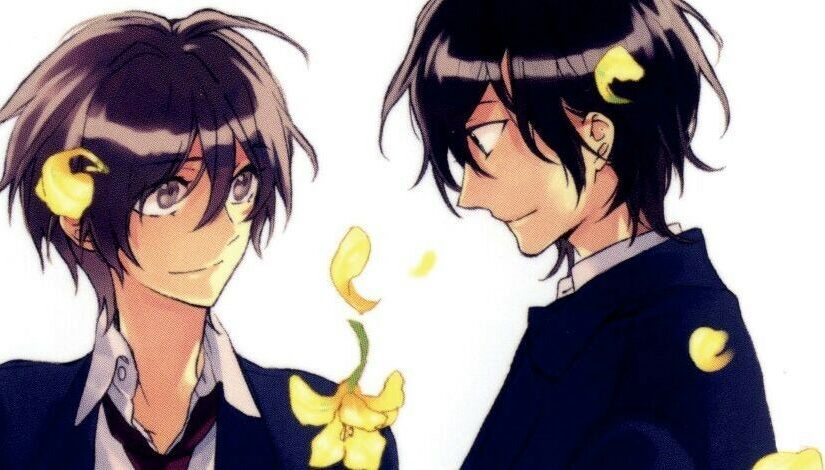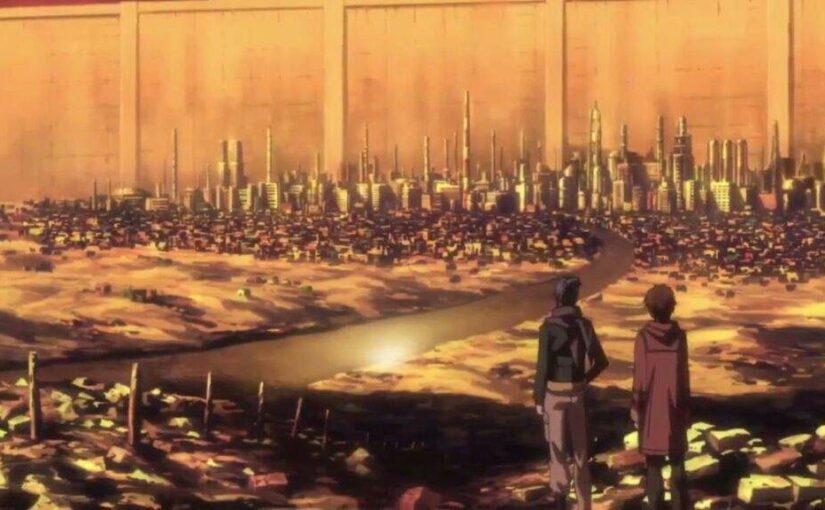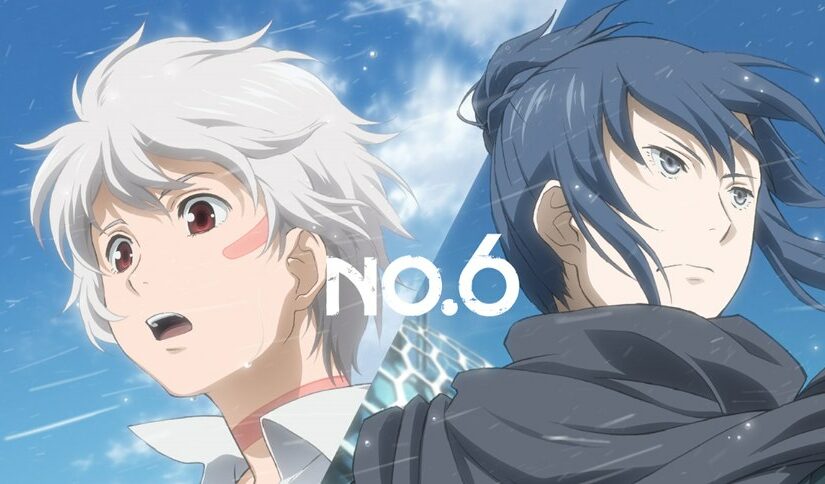The artwork in Tillie Walden’s graphic novel Are you Listening is breathtakingly beautiful. The story accomplishes a lot for the short duration of the book. The story follows two young lesbians on their journey through the countryside as they encounter weird landscapes and an interesting cat.
Tag: lgbtq
Yuri!!! On Ice
Yuri On Ice is an amazing sports anime to watch. The anime follows Yuuri Katsuki, a pro-Japanese figure skater, as he deals with a painful loss at the Grand Prix Finale and how he comes back even better the following year with the help of his idol Victor. It has everything a good sports anime should: compelling rivals, beautiful animation, and funny banter.
Having only one season with twelve episodes, it’s a good binge watch. The ending was great but not fully satisfying. However, a prequel movie is confirmed, and a second season is rumored.
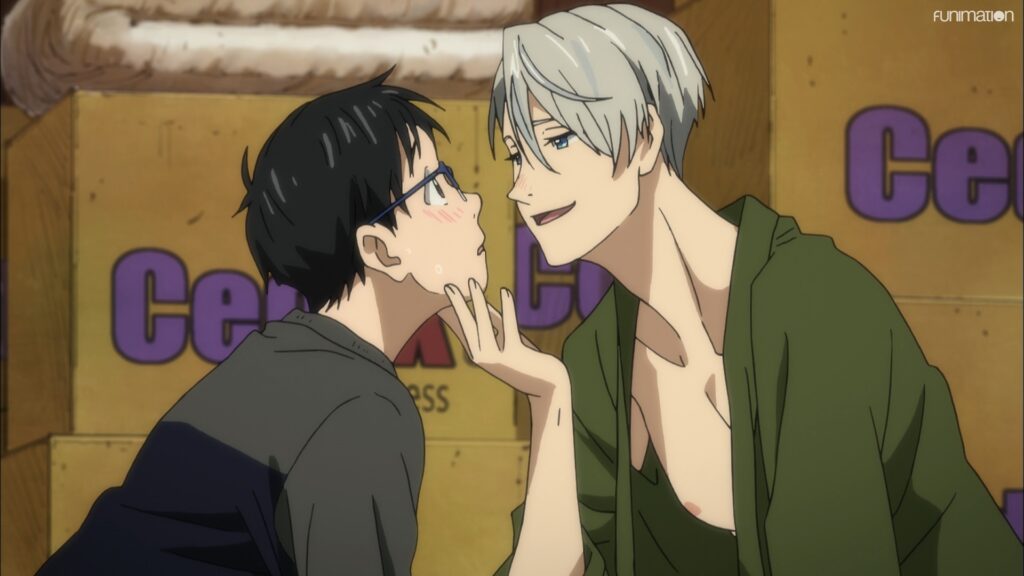
The show is an excellent sports anime. But it falls short of me saying it was a good shounen-ai anime. In fact, it would be a farce to call it a shounen-ai anime. The anime has constant sexual tension between Yuuri and Victor, yet nothing comes with it. Season one would have been perfect if it ended the Grand Prix with Victor and Yuuri kissing, but they didn’t.
Many people have accused the show of queerbaiting. IE: the show is just gay enough to attract a queer audience, yet not too “over the top” to deter the “straights” away. I would argue that the show provides more than enough “gay” scenes for it not to be accused of queerbaiting. Just because the actors’ sexual orientations are not front and center or that a romantic relationship didn’t form in the first season doesn’t mean it is queerbaiting. With that said, I would be highly disappointed if Yuuri and Victor didn’t start dating if the show got a second season.
Gravitation
I absolutely loved this show. It was fast-paced, never repetitive, and it was absolutely hilarious. It is a must-watch for the shounen-ai genre.
The show is built on strong character dynamics. Shuuichi, the main character, is very goofy and emotional. Shuuichi is the polar opposite of Yukie, the person he falls in love with.
The show isn’t without flaws. The animation is inconsistent at times, and although the music is great, they constantly re-use the same two songs the entire show.
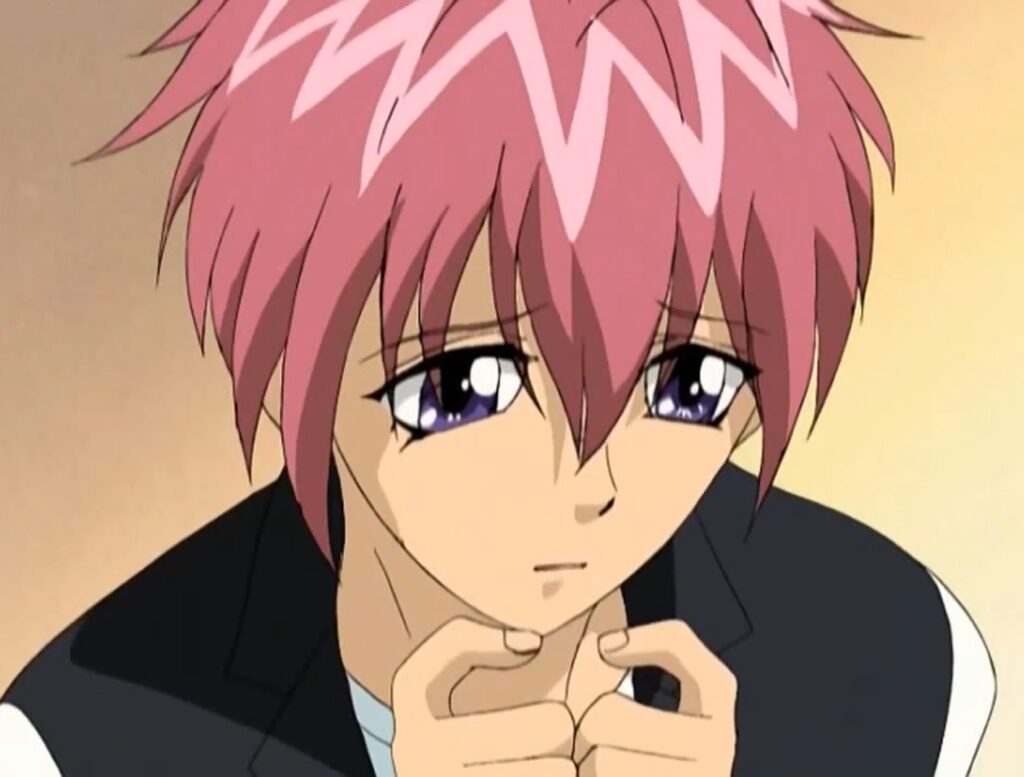
I’m conflicted as to how I feel about Shuuichi falling in love with Yukie in the show. Yiki is a narcissist who talks down on people and pushes everyone out of his life. However, by the end of the season, with the backstory of Yukie fleshed out, I come to understand why Yukie acts the way he does and he does open up to Shuuichi more.
I can’t say that Gravitation said or did anything unique in it’s show. According to todays standards, it is a typical love story. However, being published in 1999, this was one of the first popular shounen-ai anime, and it opened the floodgates for the genre as we know it today. Despite being 20 years old, the anime still is well worth the watch.
Manga: There are Things I Can’t Tell You
Short review for a short LGBTQ romance manga. The artwork was gorgeous, and the romance between Kasumi and Kyousuke was heartfelt. Definitely worth the read if you are interested in gay romances.
Apart from your typical love tropes, this manga explores two additional themes: what it means to be happy and how our careers can interfere with our romantic lives. In the manga, Kyousuke pushes away Kasumi because he believes that Kasumi would be happier if he weren’t in a relationship with him — because societal norms growing up coerced him into thinking that gay relationships are somehow bad. It wasn’t until receiving a love confession from Kasumi and advice from his boss did Kyousuke decide to follow his heart and proclaim his love to Kasumi.
Kyousuke is depicted as a workaholic, frequently pulling all-nighters for the agency that he works for. This ends up pushing him to burnout and being unhappy. Moreover, at the beginning of the manga, Yukiko is having an affair with Kasumi because she is unhappy with her husband because he is distant because of work. Yukiko believes that Kasumi could fill a hole in her life, but that never happens. Nothing that the manga says is deep in this regard. But, it is nice including this because our society has a romanticized view of workaholics. Yet, in reality, it is a self-destructive behavior that pushes the ones you love out of your life.
Seven Days
This was one of my first LGBTQ romance mangas apart from No.6. The entire thing was relatively straightforward. Not too memorable. It would be unfair to compare it to No.6 since No.6 had more volumes to do character and world development. For being a sort of romance story, it did a great job. The artwork was nice; however, it was a little confusing to follow– possibly bad translations.
The general premise of the manga is that the main character Shino falls in love with another mal high school student named Seryo. However, Toji Seryo is an oddball in that he dates people exactly one week before deciding whether or not he fell in love. Being popular with the ladies at his high school Seryo is nearly always dating someone — again, just for one week. In addition, Seryo always says yes to the first person to ask him out on Monday morning. The story starts with Shino asking Seryo out, and they have exactly one week to fall in love.
No.6 Anime
Oh boy, so No.6 has an anime adaptation. To put this review short, the first half was great, but the second half fell apart the ending was rushed. This adaptation would really have been a lot better if it had three more episodes.
Don’t get me wrong, the adaptation nor the plot wasn’t terrible. With only 11 episodes, there is little reason for you not to watch it if you are interested in LGBTQ or sci-fi dystopias. My gripe with the anime may merely be because I read the manga first.
Up until the end, the anime followed the manga pretty close. Things diverged after Shion and Rat find out about Safu and decide to infiltrate the correctional facility. In the manga, Rat, and Safu visit the cave people and the Elder after the Manhunt, and Shion and Rat were dumped in a massive body pile in the correctional facility. Rat and Shion end up visiting the cave people by crawling through a crack in the wall. Slight plothole here since it doesn’t make sense for there to be an exposed cave in the middle of the correctional facility leading to dissidents? The anime actually fix this issue by having Rat and Safu visit the Elder before the Manhunt. In the anime, Dogkeeper and Rikiga play a larger role in getting them deeper into the facility by gaining access to a terminal.
By moving the “cave people” placement and when Shion learns about Rat’s tragic backstory of being the lone survivor of a genocide that eliminated the “Forest People,” it lessens how emotional the entire correctional break-in is on Shion. In the manga, they took time to have Shion grieve as he witnessed a literal mountain of dead bodies and then learn about Rat. At one point in the manga, a victim even asks Shion to end his life because he was in so much pain. In fact, Shion comes to the edge of a mental breakdown multiple times and even contemplated ending his life. Since the anime pacing was way too fast, we don’t get to see as much of this, and instead, it jumps past all that important character development and land at a point where Shion instantly became decisive ok with killing.
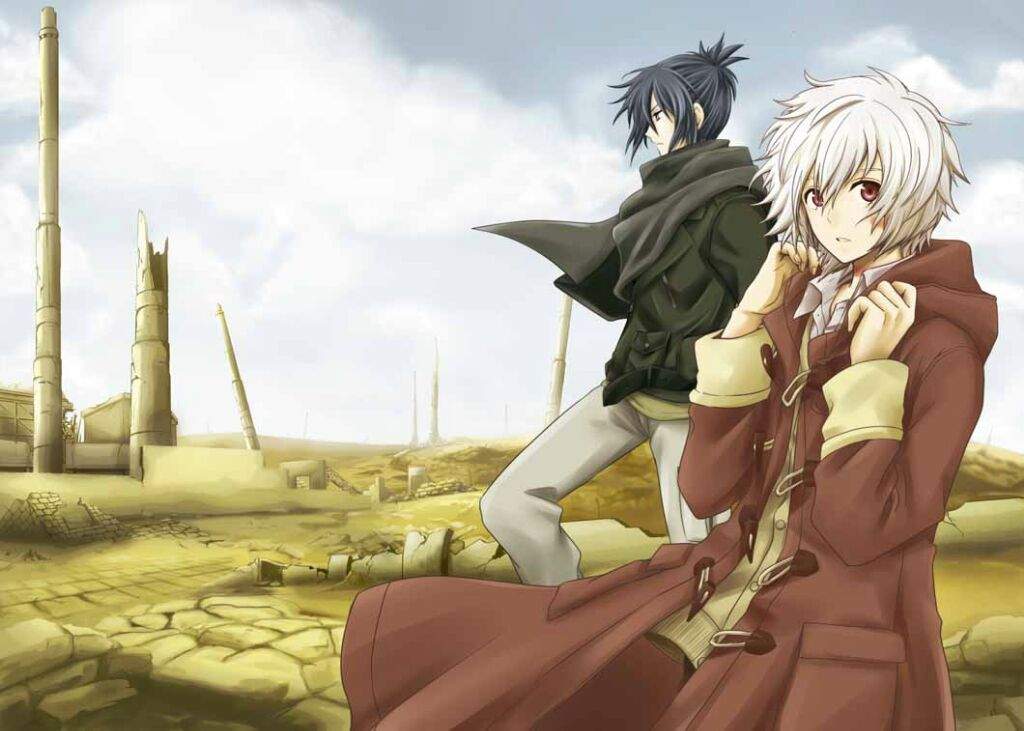
The anime ends quite abruptly compared to the manga, which gave slightly more closure. In the anime, both Shion and Rat were shot and injured pretty badly while trying to flee to the ground floor to make their escape with Dogkeeper and Rikiga. Shion was shot in the heart while saving Rat, and it doesn’t look like he will make it. After fumbling to the ground floor, Shion is essentially passed out practically dead, and Rat won’t leave his side. So what happens? Their best friends, Dogkeeper and Rikiga, flat up, left them to die at the correctional facility. Dogkeeper saying something like, “the one with something to protect always loses.” After their best friends abandon them, Elyurias magically appears, heals both of them, finishes destroying the outer wall of No.6, and vanishes. The anime then goes to a cut scene where everyone is outside looking at the outer wall destroyed, and the very last thing we see is Rat kiss Shion with no dialog whatsoever — plus, the kiss was swift.
I’m not saying that the manga’s ended perfectly; it too was rushed, but it at least gave characters more time to process the events, and it gave more closure. In the manga, Shion wasn’t fatally shot; only Rat was. Rather than his friends abandoning him like in the anime, they all stuck together and made a daring entrance into No.6 to get Rat the medical treatment he needed. Rather than have Elyurias magically disappear, Rat and Shion went downtown to have Rat sing the song of wind to calms Elyurias and make a deal with her. The deal promised Elyurias that they would do better to protect the forest in the future. In the anime, all Elyurias did was exact revenge on No.6. By going downtown to face Elyurias, we actually face our antagonists — the mayor and the head researcher responsible for all the inhumane experimentation. The anime never even introduced us to the antagonists. In the anime, the enemy was always just “No.6”.
The ending in the manga gave more closure between Rat and Shion. They kissed, and Rat said that he promised to come back for him, but he wanted to do traveling. Shion, in the meantime, became responsible for rebuilding the city — specifically, he was in charge of revitalizing the forest.
The start of the anime was excellent. The visualization of the city, the technology, etc, were all excellent. It is a shame that they didn’t follow the manga closer because it would have had such a more satisfying ending than it did. Not to say it was bad if I didn’t read the manga, I probably wouldn’t have complained hence much. What is tragic is that it would have only required 1-2 more episodes to include everything that they left out from the manga.
No.6 Manga
I really loved this manga! The gay love interest between Shion and Rat provides a strong emotional backbone for the story. However, the story is more than just a coming of age/romance story. At its core, this is a sci-fi manga that covers the dystopian city of No.6. The plot was concise, and the pacing of the manga was excellent. The core set of characters were diverse and played really well into the setting. On top of all that, the artwork in this manga is top beautiful making it an enjoyable series to read.
No.6, in my opinion, touched on some of the same themes as Full metal alchemist. The leaders of No.6 became blinded by power and the scientific inquiry that they committed grave crimes in the name of a pure ideal– protecting the Holy City. No.6’s city leaders killed hundreds, silenced dissidence, and intruded on citizens’ freedoms to protect the city. There was the mad scientist that killed thousands in the name of protecting the city. Similar to the themes in Fullmetal Alchemist, ideals that are taken way too far leads to destruction. Zealous devotion to either science or faith leads to bad things. In No.6, Shion teaches people that there is a third option between destroying the city and keeping the status quo — i.e., between Rat’s drive for revenge and the city officials, killing people of the West district and their citizens. It is with Shion at the end of the Manga that begins to rebuild the city with No.6 and the west district. Building a city that respects nature and does not discriminate against people outside of the city or against people who disagree with the government.
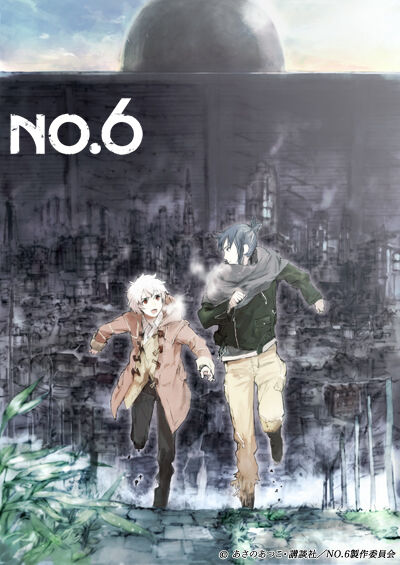
At the end of this story, I felt sad/happy/something, I almost broke into tears. It is sweet that Shion and Rat had a “Promise” kiss at the end, however, I wanted to see the two stay together and live happily ever after. Instead, Rat goes away to travel the unknown, and Shion is left in the city to rebuild. It was a happy ending, but… all that buildup for one kiss. I guess it leaves more for the imagination of what would happen in the future. I felt that way when I saw Gon and Killua separate at the end of the Hunger x Hunter anime. I know they would be reunited, but seeing them leave each other hurt.
Were Shion and Rat too different to remain together in the end? Rat said he was a wander, and Shion tended to cling to places. True, but Shion would have traveled, he said it himself, a life without you is a life not living. This manga was soo emotional, and the characters were captivating. Rat is the devious person with an air of mystery, and Shion being the pure sheltered person. Both characters change throughout the manga. Watching the mass murders changed Shion to the point where he ends up kills someone to save Rat. Rat changed from someone who only distrusts people to someone capable of love.
I think Shion and Rat’s characters bring up an interesting discussion about nature vs. nurture. Also, this can tie in with Dogkeeper’s character. These two were polar opposites in many regards. Shion being the light, having often naive ideals and outlook on the world. Shion was overly trusting of people, which put him in danger in West block. Was Shion “naive” way because of his upbringing? Being born in No.6, having a loving mother, never really facing any hardships, it is easy to say that this had a factor. However, even among the No.6 residents, Shion was particularly nice, even his mother was. It appears that most citizens in No.6 are nice in this way. What sets Shion apart from the rest of the citizens is that Shion is genuinely nice, where the rest of the citizens only put on a show facade of being good people. When he learned about the dark side of No.6, Shion fought it, where other residents just ignored it.
Rat is slow to trust, and he believes that the ends justify the means. Rat believes that destroying No.6 is worth it as long as it brings an end to the injustice that No.6 creates. Where Shion initially believed that bloodshed is always wrong no matter the cause. Rat doesn’t know exactly how to quantify Shion, often saying “is he even human” to himself. Maybe Rat believes that Shion is like an angel. Rat tries to protect Shion’s innocence. When at the correctional facility, Rat stops Shion from killing two different people. However, in the end, Shion ends up killing someone to save Rat’s life. The correctional facility changed Shion, after seeing a literal mountain of bodies, pain, and blood beyond imaginable, Shion changes. He doesn’t turn bitter and hate the world, but, he emerges as a man of action– proving to Rat that his words aren’t just shallow. At times throughout the Correctional facility, Shion almost kills himself. Once after seeing the mountain of bodies. Another time after Seeing the hologram of Safu and destroying Mother — the AI entity that NO.6 tried to create. After that misfortune, Shion became decisive and moved onwards. He stitched up Rat, and left an exploding building. Once rat was better, Shion and Rat didn’t go back to West Block to be safe, but instead went downtwon to put an end to the violence. Shion was able to calm the crowd and get Rat inside the Mayers office to stop Elyurias.
With all that said, nature vs. nurture? Are the people in No.6 better people since they had a better upbringing, or is their pompous upbringing at the cost of others in the west district bloody their hands? Most people in No.6 are innocent like Shion. Due to their environment, people in the West district commit crimes to survive– but does that make them bad people? These people are distrustful, like Rat. People like Rikiga (the old journalist turned porno mag) who is a sleazy drunk. Would all these people be different if they had the luxury of No.6? Dogkeeper puts on a hard exterior, but, on the inside, she is really a nice person. Interestingly, Dogkeeper was literally raised by Dogs– similar to Inosuke in Demon Slayer being raised by Boars. Characters like this only really work in fictional pieces. But, they illustrate how people born with nothing can still be good. I don’t think No.6 provides any clear answers but, it poses a good way of thinking about how your environment affects how people behave and what they value.
This isn’t the only Anime to bring up this idea. Older manga like Bleach dabbled with the problems with poverty– consider the Rukon district in the Soul Society. In Bleach, royalty was in more of a negative light than the lower class since they were completely disconnected from reality at times. In both Bleach and No.6, the lower class had more criminals but were at its core good people. Newer animes like Black Clover also look at social classes and how it huts the lower class. No.6, with its dystopian spin on things, makes this discussion a bit more salient.
Overall: highly recommend the read.
